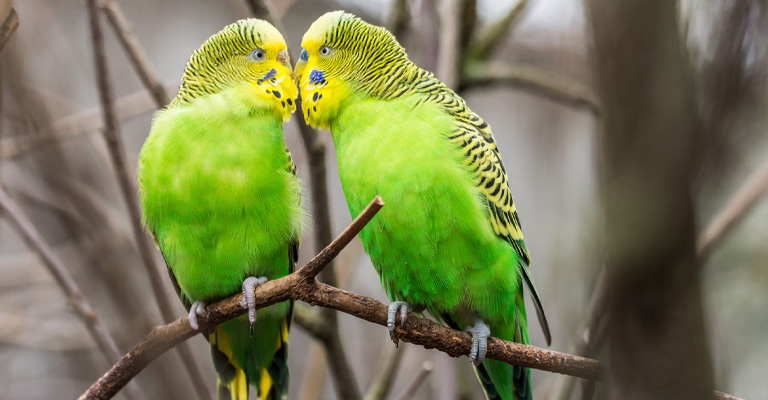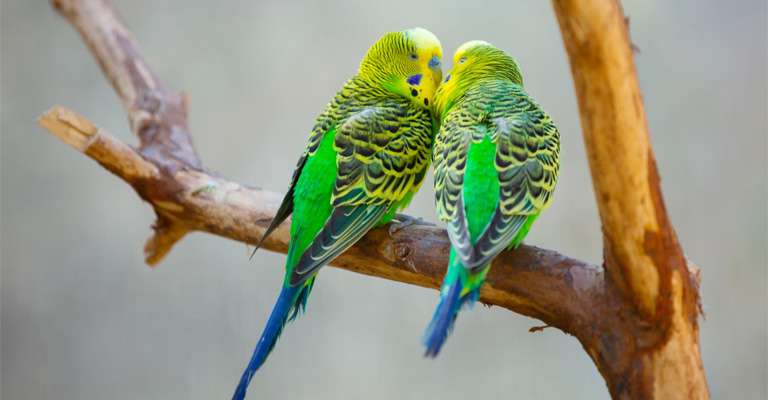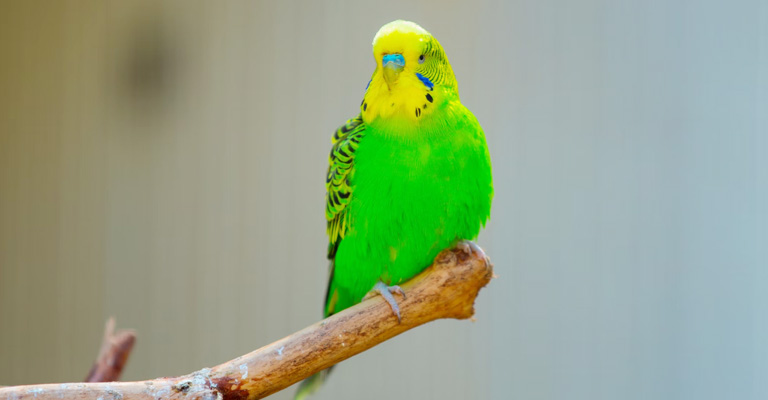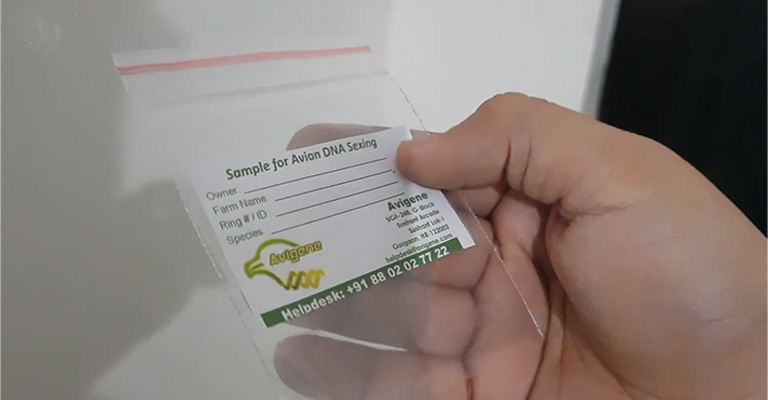Parakeets, with their vibrant plumage and cheerful personalities, are popular choices for pet bird enthusiasts around the world.
While caring for these delightful birds is a joy, one question that often arises for new and experienced parakeet owners alike is how to tell the gender of a parakeet accurately.
Gender identification is crucial for a variety of reasons, from selecting suitable companions for your pet to understanding their unique needs as they grow.
In this blog post, we will delve into the methods and cues that can help you decipher the gender of your parakeet. We’ll explore both the traditional techniques, like observing cere colors and behavior, as well as the modern, highly accurate DNA testing method.
Whether you’re a first-time parakeet owner or simply curious about your avian friend’s gender, this guide will provide you with the knowledge needed to unlock the mystery of your parakeet’s gender.

Physical Characteristics of a Parakeet
A parakeet, also known as a budgerigar or budgie, is a small, colorful bird native to Australia. Typically measuring about 7 inches (18 cm) in length, they have a slender, streamlined body with a long, tapering tail.
Parakeets are known for their vibrant plumage, which comes in a variety of colors, including green, blue, yellow, and more, depending on their breed. These birds have a distinctive appearance with a small, curved beak, which they use for eating seeds and grains.
Their eyes are round and dark, and they have strong, agile feet with claws for perching and climbing. Parakeets are known for their playful and active nature, often seen bobbing their heads and chirping melodiously.
Their physical characteristics, combined with their cheerful disposition, make them popular as pets worldwide.
How to Tell the Gender of a Parakeet?
Determining the gender of a parakeet (budgerigar or budgie) can be challenging, especially in young birds. Here are some methods to help you determine their gender:
Cere Color
The cere is the fleshy area just above the beak where the nostrils are located. In adult parakeets, the color of the cere can help identify their gender.
Males
Typically have a bright blue cere, though it may vary slightly depending on the breed.
Females
Usually have a pink, brown, or tan cere. It can be light blue in some rare cases, especially in young females.
Age
Young parakeets can be difficult to sex based on cere color alone. As they mature (around 3 to 6 months old), their cere color will become more distinct.
Behavior
Male parakeets tend to be more talkative and may mimic sounds, while females are often quieter. However, behavior alone is not a foolproof method for sexing.
Vent Inspection
This is a more invasive method used by experienced breeders and veterinarians. It involves gently holding the bird and examining the area around the vent. Males typically have a more pronounced bump or ridge near the vent compared to females.
DNA Testing
The most accurate way to determine the gender of a parakeet is through DNA testing, which involves a blood or feather sample. This method is nearly 100% accurate and is typically used for breeding or in cases where the gender must be known definitively.
Remember that individual variations and mutations can make gender determination challenging, so it’s always a good idea to consult with an avian veterinarian or an experienced breeder for accurate identification, especially if you’re uncertain about your parakeet’s gender.
Behavioral Clues of Parakeets That Indicate Their Gender

Parakeet (budgerigar) behavior can provide some clues about their gender, but it’s important to note that these cues are not always definitive, as individual birds can have varying personalities.
However, there are some general behavioral tendencies that can be associated with male and female parakeets:
Male Parakeet Behavioral Clues
- Vocalization: Males are often more talkative and inclined to mimic sounds, including whistles, tunes, and speech.
- Head Bobbing: Male parakeets may engage in more frequent and pronounced head bobbing, especially when they are trying to impress a female or show excitement.
- Courtship Displays: They may perform courtship displays like fluffing their feathers, regurgitating food to feed a female, and tapping their beaks on objects or perches.
- Aggressiveness: In some cases, males can be more territorial and aggressive, especially if they feel their space is being invaded.
Female Parakeet Behavioral Clues
- Quieter: Female parakeets are often quieter compared to males and may produce fewer vocalizations.
- Less Aggressive: They tend to be less territorial and aggressive compared to males.
- Nesting Behavior: Females may exhibit nesting behaviors like inspecting nesting boxes or materials, even if they aren’t actively breeding.
- Socializing: They may be more social and interactive with other birds and humans, seeking attention and companionship.
It’s essential to remember that these behavioral cues are generalizations and can vary widely between individual parakeets. Additionally, age, health, and socialization can influence behavior.
How Age Can Affect Gender Identification?

Age can significantly affect the accuracy of gender identification in parakeets (budgerigars). This is because the physical characteristics and behaviors that indicate gender can change as the birds mature. Here’s how age plays a role in gender identification:
Cere Color
The cere, the fleshy area above the beak where the nostrils are located, is a primary indicator of gender in adult parakeets. In young birds, the cere color is often not fully developed, making it challenging to determine gender accurately.
As parakeets age, their cere color becomes more distinct, typically reaching its final coloration by 3 to 6 months of age.
Behavior
Behavioral cues may also change as parakeets mature. Young parakeets are still developing their personalities and may not exhibit the full range of gender-specific behaviors.
For example, young males may not display as much vocalization or courtship behavior until they reach sexual maturity.
Physical Characteristics
Physical features associated with gender, such as the size of the cere or the prominence of the vent area, can become more pronounced as parakeets grow older. This can make it easier to identify gender through physical inspection in older birds.
Given the age-related variations in gender identification, it’s crucial to be patient when attempting to determine the gender of a parakeet, especially if the bird is young.
If you’re uncertain about a parakeet’s gender, waiting until it reaches sexual maturity (around 6 months of age) and observing changes in cere color and behavior can provide more reliable clues.
DNA Testing of Parakeets

DNA testing is a highly accurate and reliable method for determining the gender of parakeets (budgerigars) at any age. This method involves analyzing the bird’s DNA, typically obtained from a blood sample or a feather shaft. Here’s how DNA testing of parakeets works:
Sample Collection
- Blood Sample: A small amount of blood is drawn from a vein, usually from the leg, using a sterile needle and syringe. This procedure should be performed by a trained veterinarian or experienced avian handler.
- Feather Shaft Sample: Alternatively, a few feathers can be plucked, and the feather shafts containing the bird’s DNA are sent for analysis.
Laboratory Analysis
- The collected sample is sent to a specialized laboratory that offers DNA testing services for birds.
- In the lab, the DNA is extracted from the sample, and specific genetic markers or regions are examined to determine the bird’s gender.
Results
- The laboratory will provide a report with the gender identification of the parakeet based on the DNA analysis.
- This method is highly accurate and can determine gender with near certainty.
DNA testing is the most reliable and definitive method for gender identification in parakeets, especially when other methods, like cere color or behavior, are inconclusive, as these can vary among individual birds.
It is commonly used by breeders and avian veterinarians for accurate sex determination, which can be essential for breeding purposes or when ensuring compatibility in a multi-bird household.
Common Mistakes to Avoid to Identify a Parakeet’s Gender
Identifying a parakeet’s gender can be challenging, and there are common mistakes that people make when attempting to determine their parakeet’s gender. Here are some of the common mistakes to avoid:
Relying Solely on Behavior
While behavior can provide some clues about a parakeet’s gender, it’s not a foolproof method. Parakeets have individual personalities, and both males and females can exhibit a wide range of behaviors. Don’t assume a bird’s gender based solely on its behavior.
Misinterpreting Cere Color in Young Birds
In young parakeets, the cere color can be less distinct and may change as the bird matures. Avoid making gender assumptions based on the cere color of juvenile birds; wait until they are older for a more accurate assessment.
Ignoring Mutations
Some parakeet mutations can affect the appearance of cere color and feather patterns, making gender identification more challenging. Be aware of the specific characteristics of your parakeet’s mutation and how it might differ from the typical gender indicators.
Using Vent Inspection Without Experience
Vent inspection, a method where you examine the area around the vent to determine gender, should only be done by experienced individuals. Mishandling can harm the bird, and inexperienced attempts may lead to incorrect results.
Overlooking Age-Related Changes
Parakeets can change in appearance and behavior as they age. What may appear to be a male or female when young could turn out differently as the bird matures. Consider the bird’s age and observe for changes over time.
Not Consulting Experts
If you’re unsure about your parakeet’s gender, consult with experienced avian veterinarians or breeders. They have the knowledge and expertise to provide accurate gender identification through methods like DNA testing.
Making Assumptions Based on a Single Characteristic
Avoid making gender determinations based solely on one characteristic, such as cere color. For the most accurate identification, consider a combination of physical characteristics, behavior, and, if necessary, DNA testing.
Not Considering Unusual Cases
Occasionally, parakeets can have rare conditions or genetic anomalies that make gender identification atypical. Be prepared for the possibility of unusual cases.
Remember that accurate gender identification is essential for breeding, compatibility in multi-bird households, and providing appropriate care and socialization.
FAQs
One common method is to observe the color of the cere, the fleshy area above the beak. In adults, males usually have a bright blue cere, while females have a pink or tan cere. DNA testing is the most accurate method for gender identification at any age.
Behavior can provide some clues, but it’s not definitive. Males tend to be more vocal and may exhibit courtship behaviors, but individual variation is common. Behavior should be considered alongside physical characteristics for a more accurate assessment.
Yes, some parakeet mutations can result in variations in cere color. For example, certain mutations may cause the cere to remain pink or become a different color. It’s important to be aware of your bird’s specific mutation when determining gender.
Gender identification in young parakeets can be challenging. Their ceres may not have reached their final color, making it difficult to determine gender. It’s often best to wait until they are around 3 to 6 months old for more accurate results.
Vent inspection can be accurate but should only be performed by experienced individuals to avoid harming the bird. It’s typically reserved for specific situations, and for most pet owners, methods like cere color observation or DNA testing are safer and more accessible options.
Wrapping Up
The gender of your parakeet is not only about satisfying curiosity; it’s about providing the best care and companionship possible.
Whether you rely on traditional cues or opt for DNA testing, the methods discussed in this blog post will empower you to confidently determine your parakeet’s gender.
By applying this knowledge, you can ensure a happy and harmonious environment for your feathered friend, fostering a deeper bond and enriching both of your lives.
As you embark on this journey of discovery, remember that no matter the gender, your parakeet’s unique personality and charm will continue to brighten your days. Best of luck.